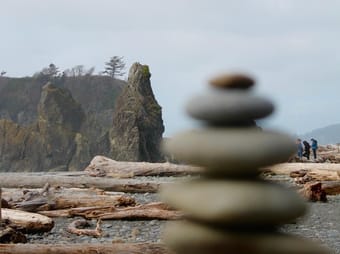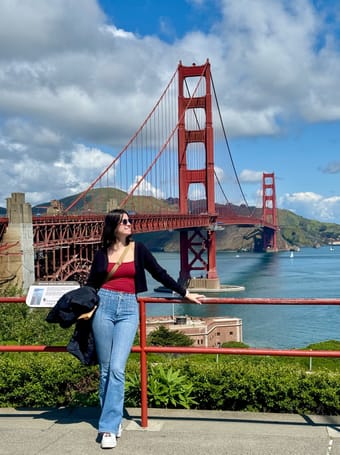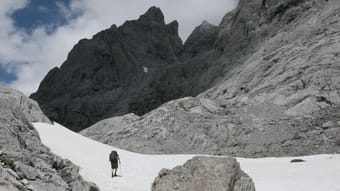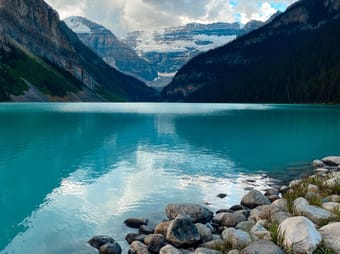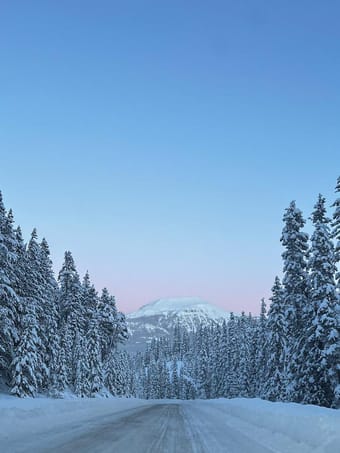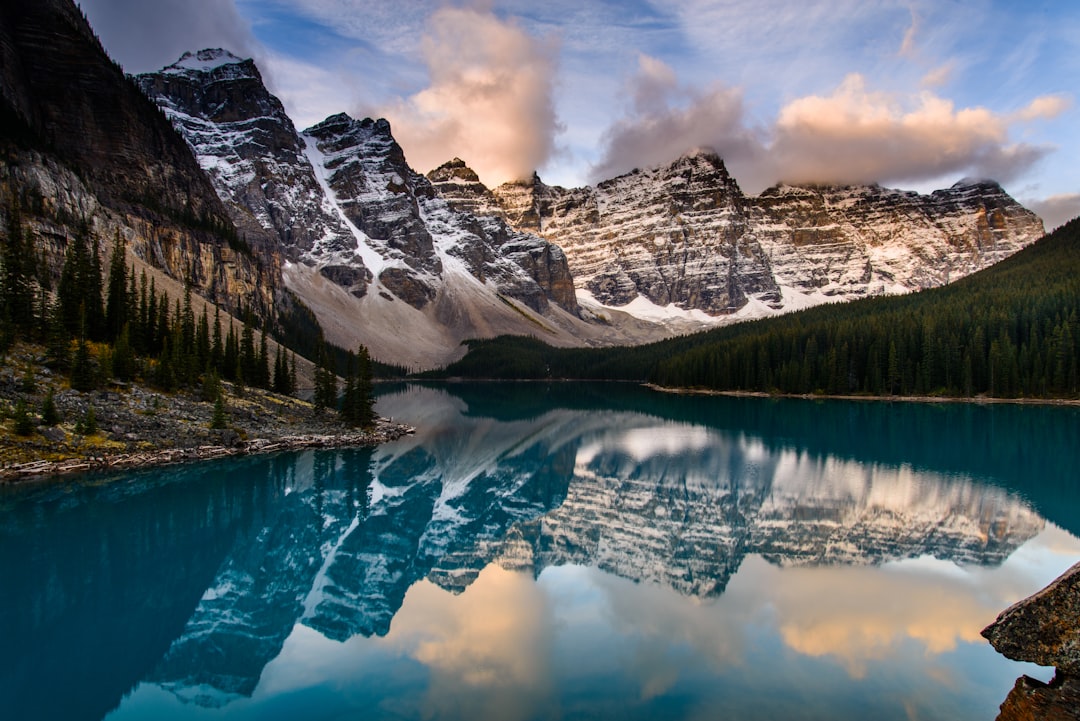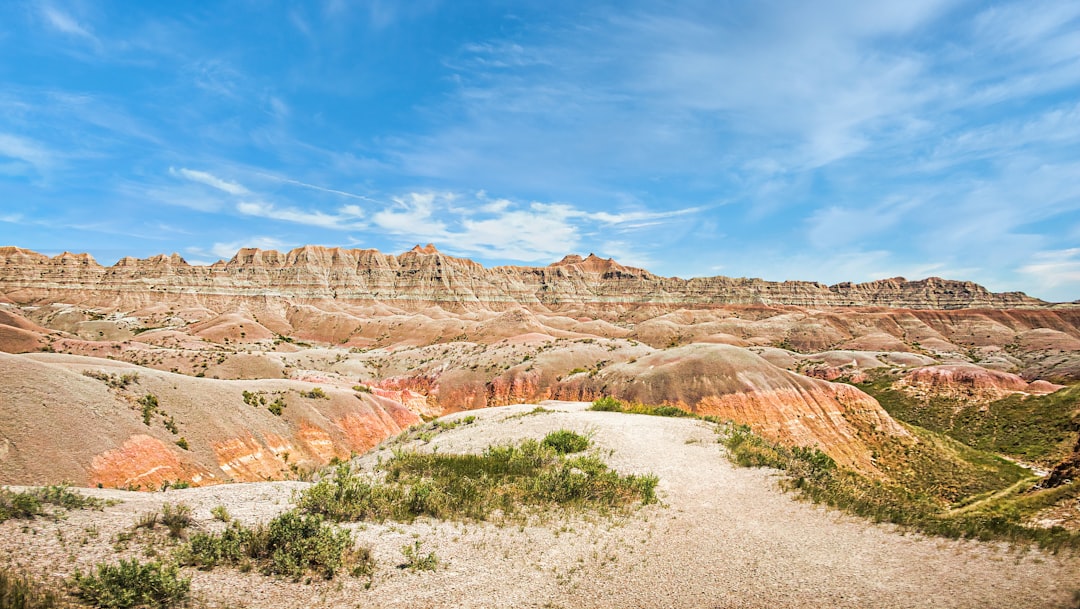Results for Grizzly Peak
Explore this map, I made as the ultimate California guide, to get inspired and discover the places that will become the highlight of your next trip. Many of the places in this map will have helpful booking links and/or links to social media posts with more inside information.
I see all my Guide Maps as perpetual works in progress and will do my best to add to and update them as my knowledge expands.
Use my Klook promo: ACKUGARTE for 10% off for new users and 3% off for returning users.
50+ • Backpacker • Couples • Groups • Family • Digital Nomads • Female Solo • Adventure • Architecture • Art • Boutique • Budget • Camping • Coffee • Foodie • History • Luxury • Outdoors • People & Culture • Photography • Relaxation • Shopping • Wine
Free
5
Seven-day trek based in refugios.
INTRODUCTION
The Picos de Europa is a region of limestone peaks reaching over 2500 metres above sea level; the highest being Torre de Cerredo at 2650 metres. The route described here is one that I hiked alone in early summer. The best time to tackle the route is between June and September. There is more likely to be snow on the high passes in early June but they are usually not to difficult to negotiate.
The Picos de Europa is not as well known as the Pyrenees or Alps and as such the hiker traffic is less and the tourist infrastructure is less developed. This makes the area feel less spoilt but it can also make it a more challenging area to explore with fewer trails and little to no signposting. Always take a map with you: the Editorial Alpina 1:25,000 maps are the best. I took these and also used the outdooractive app and downloaded the relevant map tiles. This is useful for pinpointing where you are, in what can be confusing terrain. I was lucky to have clear weather for my entire trek but I would imagine that it's pretty difficult to navigate when the cloud is down on the mountains so take a compass too.
You can stay in refugios every night on this hike and wild camping is permitted above 1500m; details below.
I can't recommend the Picos de Europa as a hiking destination enough. The mountains are magnificent but there are also beautiful extensive woodlands at lower altitudes, as well as meadows full of wildflowers and butterflies. The juxtaposition between the stark limestone peaks and the gentle greenery of the valleys is beguiling.
DISCLAIMER: Please note that hiking in the Picos de Europa is not risk free. It is a very challenging area in which to hike. I accept no responsibility for any accidents you may experience while hiking this route. You are responsible for your own safety. Some of the dangers and difficulties are listed a little further down this guide.
HOW BUSY?
Unlike some of the more well know hikes around Europe this trail is less well trodden and as such the trail can be quite hard to follow at times, and at other times there is no trail! Despite this, refugios, being small, fill up fast (see below).
REFUGIOS
The hike is made easier if you stay in the staffed refugios where you can recharge your metaphorical batteries. Accommodation at these mountain huts is in communal dormitories and you will need to bring your own sleeping bag. It's best to book ahead as they are often full throughout the summer. Prices are around the €12-17 mark and they also do affordable meals (breakfast, picnic lunch and dinner).
There is also a handful of unstaffed, very basic mountain shelters with no services and no beds but these can be a good option in an emergency. Most of the refugios only accept cash so be sure to take plenty with you before you set off as there are no ATMs! All the refugios on the route are listed in the route description below with website links.
WILD CAMPING
Camping is only permitted at 1500m above sea level or higher. There is not much water anywhere above this altitude so be sure to fill up when you get the chance (at refugios) before camping in a remote spot.
POSADA DE VALDEON
This beautiful village tucked in the valley between the Macizo Central and Macizo Occidental is a lovely place to wander for a few hours. At the centre of the village there are a number of restaurants and bars and a small square with a water fountain. If you need somewhere to stay before or after the trek you'll find hotels, guest houses and a youth hostel. There is a hotel recommendation and link in the route description.
In the centre of the village is a pharmacy should you need any blister plasters! And on the road to the west of the village is the National Park office where you can find information about hiking and anything else to do with the national park.
GETTING THERE
From the UK there are Ryanair flights to Oviedo (Asturias airport) from London Stansted. A bit further afield you can get flights to Bilbao and Santander from the UK and the rest of Europe. Getting from the airport is a little complicated but there are buses to Posada de Valdeón from Oviedo changing in Cangas de Onis. The journey takes about 4.5hrs. There are also buses from Santander and Bilbao changing in Llanes and Riaño with the journey taking around 15hrs from Bilbao.
An easier but more expensive option is to get a taxi. You could also hire a car but of course you will have to leave the car sitting idle in Posada de Valdeón while you do the hike.
FLORA & FAUNA
This area of northern Spain is fantastic for wildlife. At lower elevations the beech and sessile oak woodland stretches for miles over rolling hills. This is part of the boreal forest that once would have covered much of Europe and is home to roe deer, wild boar, red squirrels, pine martens and brown bears.
In the skies you have a good chance of seeing griffon vultures, golden, booted and short-toed eagles, black kites and peregrines. Of the smaller passerine species the Picos are home to red-backed shrikes, black redstarts, spotted flycatchers and black woodpeckers.
But it's the wildflowers in the meadows and on the woodland edges that are the real joy and most easily appreciated. Vetches, cinquefoils and orchids create a colourful patchwork of colours with butterflies bringing the whole scene to life. Look out for swallowtails, fritillaries and hairstreaks.
NAVIGATION
Navigation is difficult as the terrain can be confusing and in many places there is no trail whatsoever. Take a map (1:25K Editiorial Alpina maps are the best), compass and GPS and know how to use them. It's also a good idea to download the map on a relevant map app. I used the outdooractive app but others are available.
WEATHER
Thunderstorms are common, usually in the afternoon and these can be particularly dangerous high up in the mountains. It's best to hike early and get to a refugio by lunchtime if there are afternoon thunderstorms in the forecast. The weather in this part of Spain is very changeable as it has a maritime climate. Rain and thick fog are possible but equally long periods of warm sunshine are not unusual. The best advice I can offer is to be prepared for anything. Pack suncream and a sunhat but don't forget your waterproofs either.
FALLING ROCKS
Rock falls are not unusual as chamois and other hikers can dislodge rocks above you. Getting caught in a rockfall is not so common but not impossible. Be aware and if you see rocks heading your way, and cannot find cover, crouch down on the floor and pull your rucksack over your head and back.
DRINKING WATER
There is very little running water as these mountains are mostly comprised of permeable limestone. You will need to take plenty of water with you each day (I packed three litres every day and usually drank it all). You can fill up at the refugios and there are a few fountains / fuentes although most of the ones I saw marked on the Editorial Alpina map were dry when I found them.
THE SUN
Sunburn and sunstroke are both real dangers and there is little shade. Keep hydrated and wear a sun hat that covers your neck.
TERRAIN
In some places you need to scramble up steep rocky sections. You will need to have experience in this kind of terrain and have a head for heights! The terrain is very rocky and uneven at higher altitudes so you will need strong, sturdy footwear. Trekking poles are also invaluable in providing support and helping you across and up awkward sections. There is also a lot of steep ascent and descent on this route so you will need to be reasonably fit.
DANGEROUS ANIMALS
On many parts of the trail you will encounter cows. In my experience they are very docile and used to trekkers so they shouldn't be of any concern. You may also find flocks of sheep and while these aren't dangerous they are often accompanied by shepherd dogs which have been trained to keep intruders away from the flock. They can be quite intimidating when they start barking at you. If you see sheep ahead it is best to give them a wide berth, even if this means veering away from the trail for a while. If you walk directly towards or through a flock of sheep you risk agitating the shepherd dogs.
Bears are not common in the Picos de Europa but there are bears in other parts of the Cantabrian Mountains, notably Somiedo National Park, not far to the west, and there is always the possibility of seeing an itinerant bear wandering through the Picos. Eurasian brown bears are not as big nor aggressive as the grizzly bears of North America so you shouldn't worry too much about an encounter. It's extremely unlikely you will see one so if you do, consider yourself very lucky.
Wild boar are common in the woodlands at lower altitudes. They are not as aggressive as some people will tell you and tend to be nocturnal. I did see some in the daytime near Vegabaño. As soon as they saw me they ran away, crashing through the undergrowth. As with any large animal it's best to simply give them plenty of space to move away from you.
I hope none of this advice puts you off hiking in the Picos de Europa. Yes, it's a challenging mountain area but the rewards for hiking here are great. Enjoy the hike!
Adventure • Nature • Slow Travel • Sustainable/Eco • Mountain • Camping
$12.00
3
Embark on an unforgettable road trip through the breathtaking landscapes of Banff National Park to Jasper National Park, a journey that promises awe-inspiring vistas and natural wonders. As you navigate the scenic Icefields Parkway, you'll be surrounded by towering mountain peaks, turquoise lakes, and glaciers. Witness the iconic beauty of Lake Louise and Moraine Lake, framed by majestic peaks, before venturing northward to the rugged charm of Jasper National Park. Along the way, encounter diverse wildlife, including elk and bears, and be captivated by the serene beauty of Athabasca Falls. This road trip is a celebration of Canada's pristine wilderness, offering an immersive experience in the heart of the Rocky Mountains.
Family • Couples • Backpacker • Adventure • People & Culture • Coffee • Outdoors • Foodie • Road Trip • Romantic • Slow Travel • Budget
$10.00
0
Rachelle Rutgrink
Ultimate Banff, Jasper, Yoho, Kootenay and Glacier Outdoors guide (70 curated spots + 7-day itinerary)
Welcome to the pristine wilderness of Canada's most iconic national parks – Banff, Yoho, Kootenay, Glacier, and Jasper. Embark on an unforgettable journey through these breathtaking landscapes, where towering mountain peaks, turquoise glacial lakes, and verdant forests await your exploration. Lace up your boots, breathe in the crisp alpine air, and let our guide lead you through a tapestry of natural wonders, immersing you in the untamed beauty and rich biodiversity of these remarkable wilderness areas. Your next unforgettable adventure begins here.
*** WHAT YOU GET IN THIS GUIDE ***
- 70 curated spots. Way more than any traditional guide!
- A FREE 7 day itinerary
- Discount suggestions where possible
- A collection of EASY, MEDIUM and HARD trails for day hiking.
- Beautiful pictures of Canada's rocky mountains
- A collection of good cafes, restaurants and coffee shops.
- A collection of outdoor stores for mountain gear.
- Fun trips for beginner and seasoned adventurers.
- A packing list for outdoor adventures.
- A list of important, must-know information such as a wildlife, seasonal information and useful tips from someone who has hiked the Rockies.
*** WHO YOU SUPPORT THROUGH YOUR PURCHASE ***
Meet Rachelle, a fervent outdoor enthusiast hailing from Maastricht, whose very essence thrives amidst the beauty of the natural world. With an unyielding passion for outdoor travel and a profound love for hiking, Rachelle has become a modern-day explorer, traversing untamed paths and scaling peaks in pursuit of exhilarating adventures.
In sharing her outdoor odysseys, she kindles a spark within others to embrace the allure of the great outdoors. Their adventurous narrative beckons fellow wanderers to heed the call of the wild, lace up their boots, and set forth on the trail of discovery. As we embark on this journey alongside her, their story becomes an anthem to the joys of hiking, reminding us that the path less traveled is often the most rewarding.
Adventure • Budget • Luxury • Foodie • Nature • People & Culture • Sustainable/Eco • Road Trip • Mountain • Camping • Van Life • Slow Travel
Free
10
Nestled in the heart of the Canadian Rockies, Banff National Park is a breathtaking natural sanctuary that spans 6,641 square kilometers of pristine wilderness. Home to iconic turquoise lakes, majestic mountain peaks, and diverse wildlife, the park offers a playground for outdoor enthusiasts and nature lovers. Banff National Park is a haven for those seeking both adventure and tranquility in the heart of the Rockies.
Unlock for access to:
🎿Things to do
🍽️Best spots to eat (cafes, brunch spots, lunch, dinner, and desserts)
🗺️ Interactive digital map of all recommendations with business hours, contact information + GPS
🌦️Access to 13 weather webcams across Banff
🏨 Accommodation recommendations and links to booking sites
🎥Video Vlog Library
🎭 Upcoming Events and Festivals
This guide is perfect for those who are flying solo, couples, group of friends, and families.
Family • Groups • Female Solo • Digital Nomads • Backpacker • Couples • Adventure • Foodie
$30.00
0
So, you're going to the Canadian Rockies?
After living in Montana for many years, I knew and expected the terrain to be quite similar. I was in for quite the surprise when this area of Canada turned out to be one of the most beautiful places I've EVER visited.
Below you'll find my favorite stops (separated by location) that we found along the way from Edmonton to Calgary (and a few stops over in BC!), along with tips on the area and an interactive map. I've included the hotels used personally, as well as some additional top rated stays at several price points. I've also included some stops that we didn't make it to this first time around, but we will definitely be heading back for them!
Quick Disclaimer: Respect nature and wildlife. Wildlife is WILD and nature is natural. Treat them as such. Leave no trace when outdoors, and respect wildlife by giving them space.
Locations included:
🏔️ Edmonton
🏔️ Jasper National Park
🏔️ Banff National Park
🏔️ Banff, Alberta (town)
🏔️ Lake Louise (town)
🏔️ Canmore, Alberta
🏔️ Calgary, Alberta
I've added quite a few hotel options, as they all book up extremely quickly and are not cheap. I did highlight the ones we stayed at as well as provided descriptions of those!
Pssst. Above is the exact route we drove also! We drove up from Montana, but flying in to Edmonton and renting a car or RV to drive this itinerary down through to Calgary is an awesome option. If you wish to continue this trip further like we did, drive down to Yoho and Kootenay National Parks in BC and Glacier National Park in Montana from Calgary! I have a separate guide for Glacier, but highly recommend if you have the time!
I have listed a variety of different things from nature and hiking to food and craft beer to a few select "other" options (that don't involve hiking). However, this guide primarily focuses on the true beauty of nature in Canada. You won't run out of options!
We found the Parks in Canada to be extremely accessible, dog friendly, and overall pretty clean. The red Adirondack chairs were the coolest thing, and I'm not going to explain that... You'll see what I mean.
Couples • Groups • Plus Size • Digital Nomads • LGBTQ+ • Families • Backpackers • Solo Female • Pets • 50+ • Adventure • People & Culture • Wellness • Overlanding • RV • Van Life • Photography • Road Trip • Coffee • Mountain • Camping • Relaxation • Romantic • Nature • Luxury • Budget • Foodie • History
$19.98
5
This road trip is recommended for a minimum of 15 days. It is a total of 5613 miles. If you would like assistance planning camping spots, more sights, or making a day-by-day itinerary with cost and other details, please feel free to reach out to us!
Adventure • Mountain • Camping • Van Life • Photography • Road Trip • Nature • Overlanding • RV
Free
1
"Most people know Redwood as home to the tallest trees on Earth. But the Parks also protect vast prairies, oak woodlands, wild rivers, and 40 miles of rugged coastline. People have lived in this verdant landscape since time immemorial. Together, the National Park Service and California State Parks are managing and restoring these lands for the inspiration, enjoyment, and education of all." - Redwood National & State Park
Accessibility • Nature • Camping • Hiking • Outdoor Activities • People & Culture • Foodie
$20.00
0
Ask ThatchGPT
